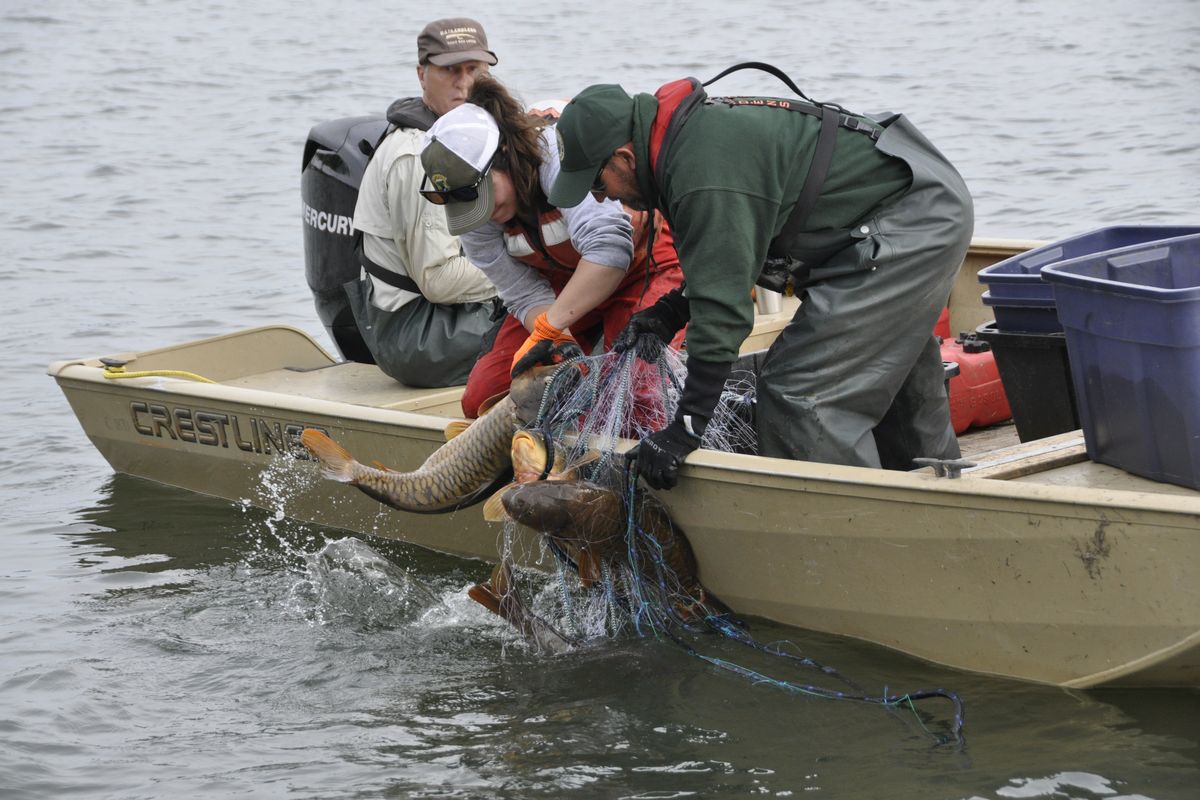Lake Spokane carp reduction project nets 550 carp, 117 pike in first week

FISHING -- The first of two weeks being devoted to honing techniques for removing carp from Lake Spokane has concluded. Starting Monday, nets were set for three nights, pulled the next day and all fish were tallied.
Totals for the week were 550 carp and 117 northern pike caught and killed. Carp and northern pike are being removed and samples taken to better understand their origins and movements. Both are considered invasive species by the Washington Department of Fish and Wildlife. Pike are not specifically being targeted, state officials say, but since they're a prohibited species in Washington, they're being removed if caught.
The largest pike caught this week weighed 22 pounds and was 42 inches long. Small pike would go through the large net mesh.
"One of the things we'll be looking at is whether pike are reproducing in Lake Spokane or whether most of them are originating from North Idaho," said Marc Divens, WDFW warmwater research biologist.
The carp removal project is led by Avista as part of its federal relicensing agreement to improve water quality in the Spokane River behind Long Lake Dam. Carp are notorious for stirring up lake bottom sediments as they feed.
Three years ago, Avista caught, radio tagged and released carp in a survey to determine where most of the carp congregate to spawn. That information is being used this year to help determine where the gillnets are placed.
The project is still in the experimental phase to learn how to catch and remove the maximum number of carp with a minimum bycatch, said Tim Vore, Avista environmental specialist.
Highest bycatch was large-scale sucker (63 total, 57 released alive), tench (55 total, 54 released alive), walleye (35 total, 18 released alive) and largemouth bass (20 total, 15 released alive).
Electro-shocking also was tried but with very poor results, Divens said.
The carp were in the pre-spawn stage while the pike that were caught appeared to be in the middle of spawning, with some of the female fish being full of eggs and others being spawned out, he said.
The 12-person crews will take a week off and then return for three more nights of netting, Vore said, noting that the carp may be more involved in spawning by then and easier to capture.
The timing has to be planned in advance to get the crews together. The project will seek to identify the right water levels and temperatures to capture carp for long-term management.
